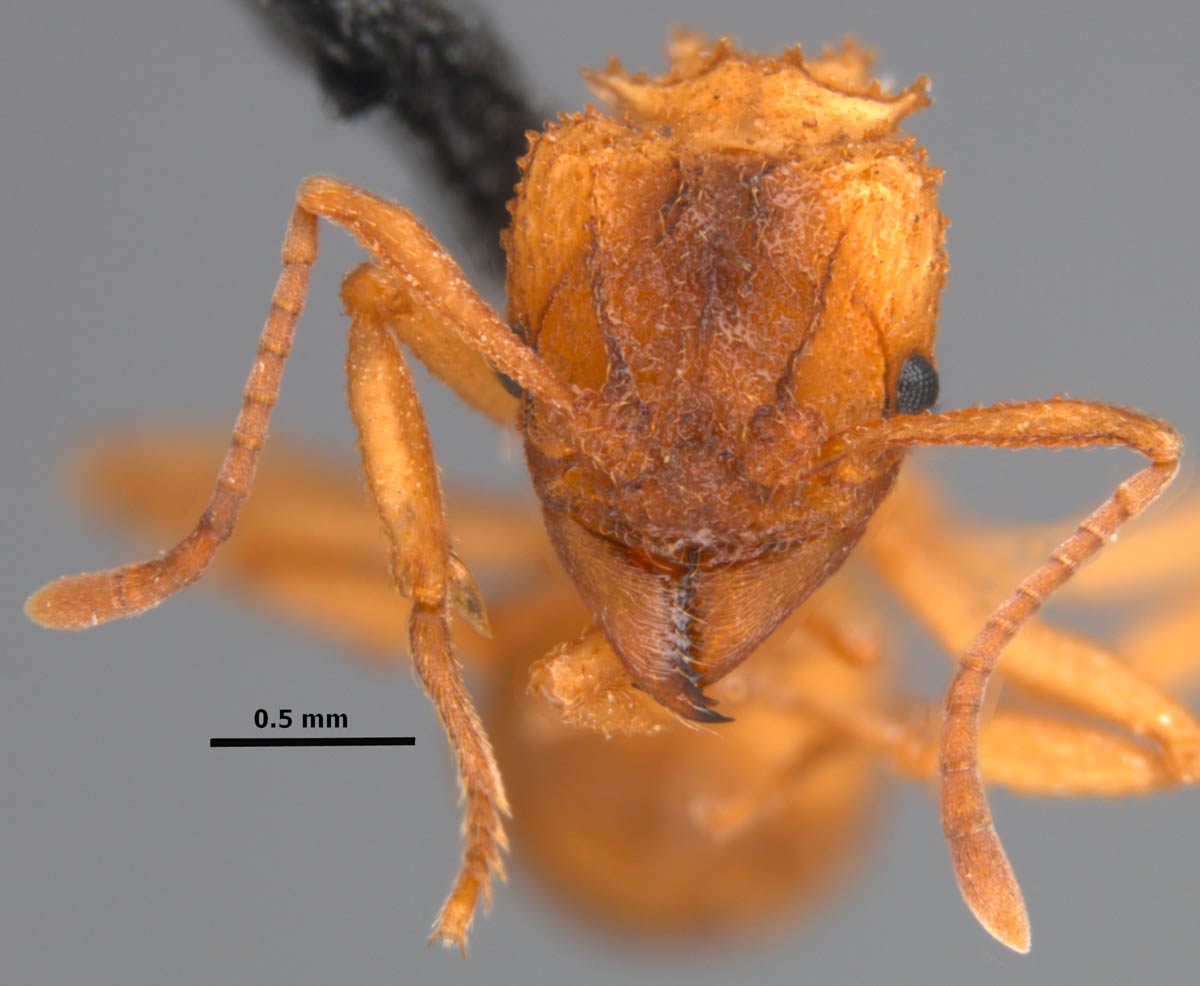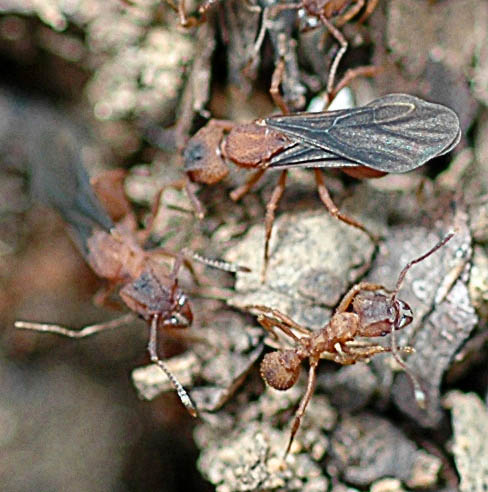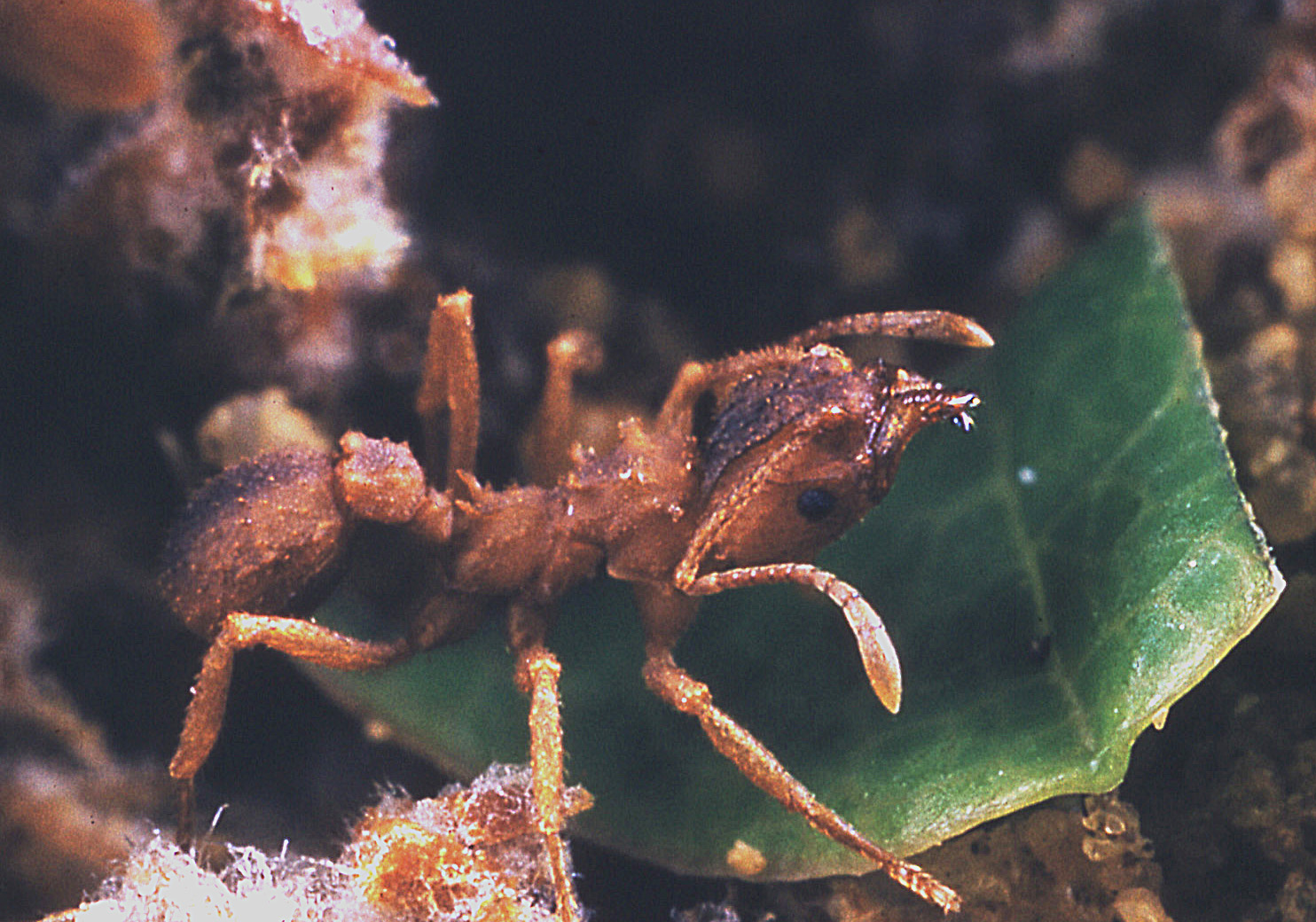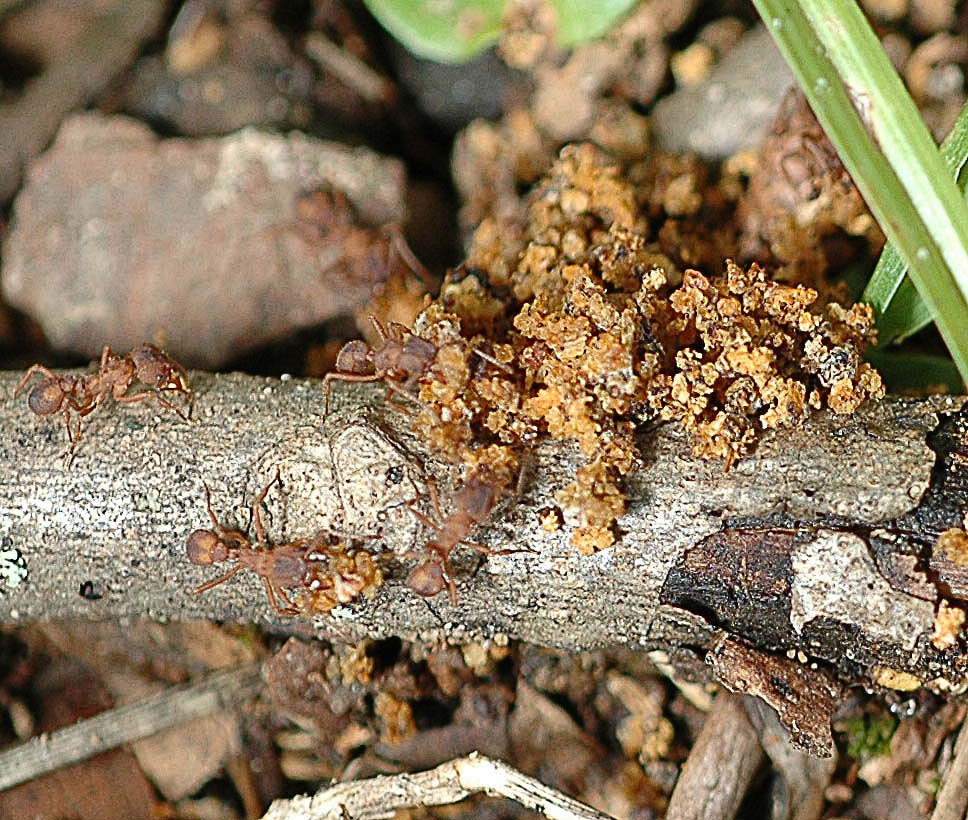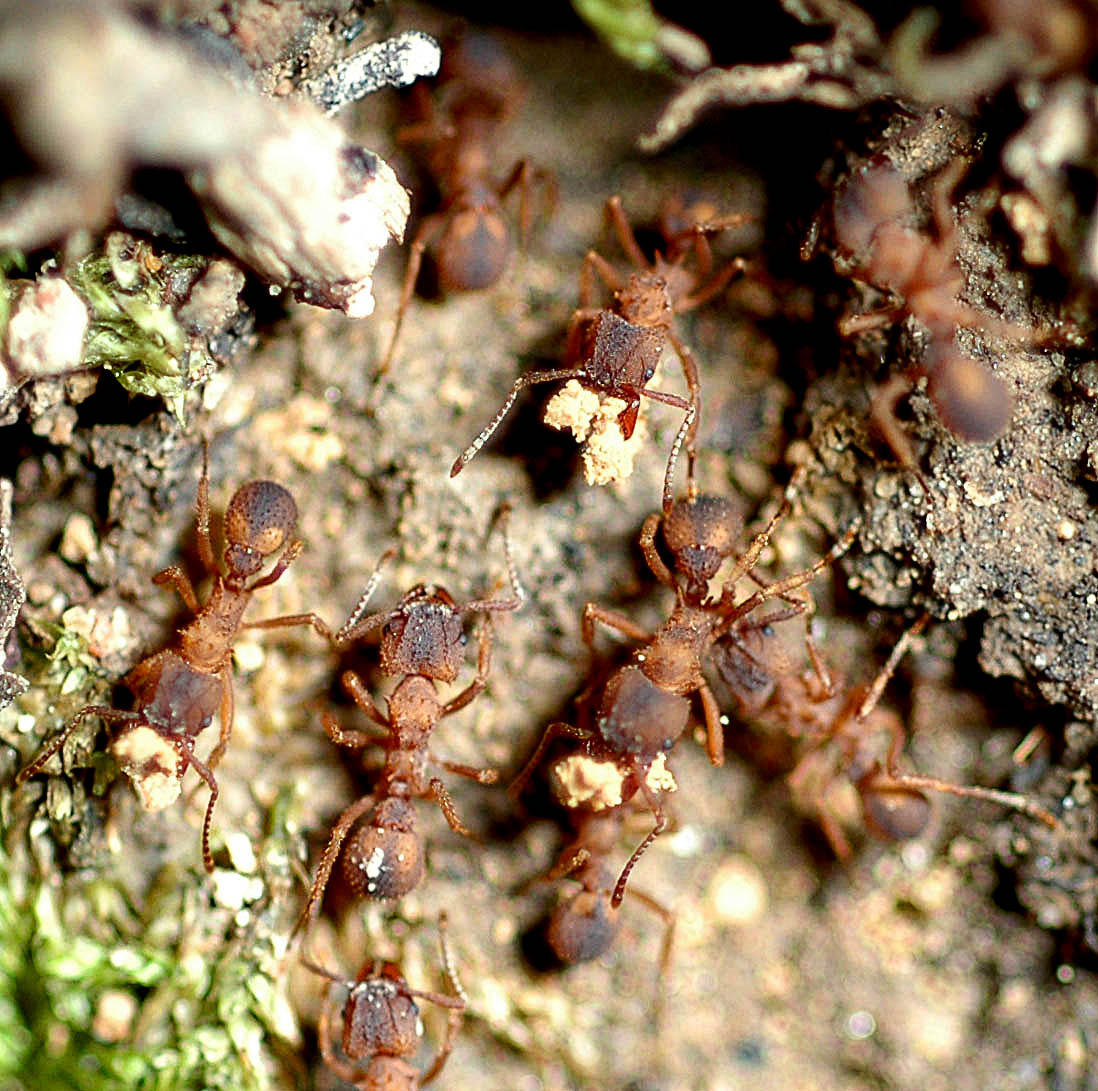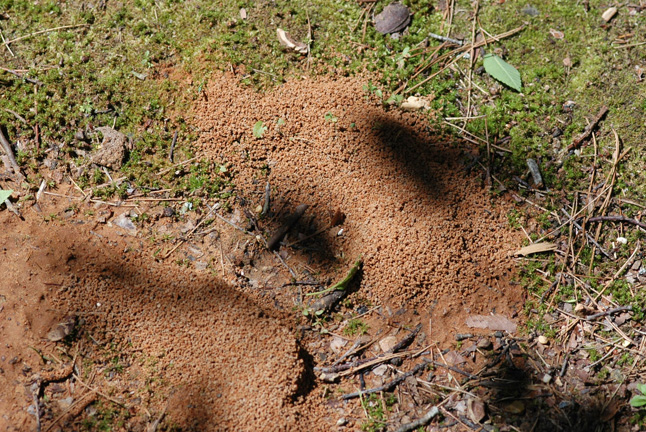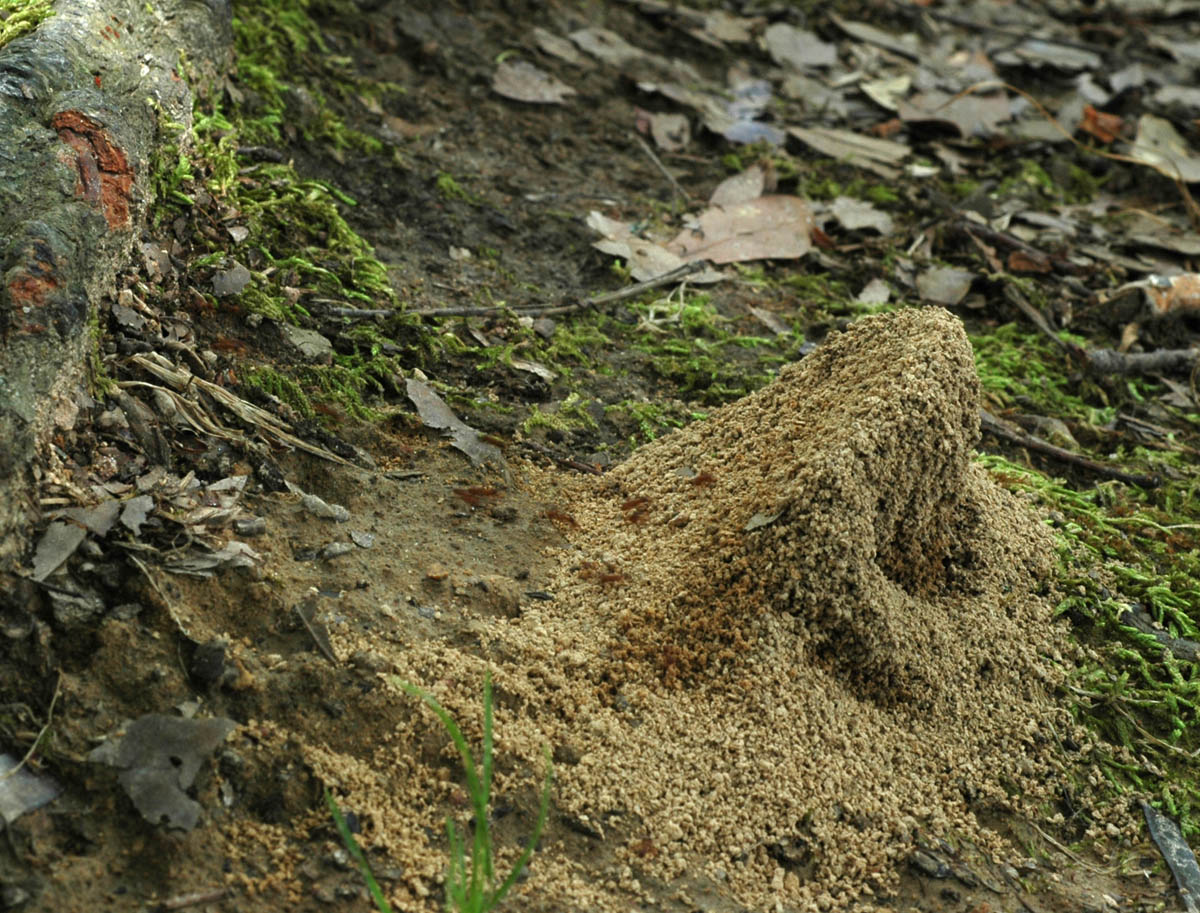Subfamily MYRMICINAE Tribe ATTINI Trachymyrmex septentrionalis (McCook) |
|
Trachymyrmex septentrionalis, full face view of a worker (click image to enlarge). |
Trachymyrmex septentrionalis, profile view of a worker (click image to enlarge). |
| Trachymyrmex septentrionalis, alate females and worker (click image to enlarge). Photo courtesy of Paul Davison, Univ. of North Alabama |
Trachymyrmex septentrionalis, worker carrying insect feces to nest (click image to enlarge). |
Trachymyrmex septentrionalis, worker carrying soil from the nest (click image to enlarge). |
Trachymyrmex septentrionalis, worker with leaf (click image to enlarge). Photo by Ross Hutchins |
Trachymyrmex septentrionalis, workers with trash heap (click image to enlarge).
Photo courtesy of Paul Davison, Univ. of North Alabama |
Trachymyrmex septentrionalis, removing soil from colony (click image to enlarge).
Photo courtesy of Paul Davison, Univ. of North Alabama |
Cresentic mounds of soil above subterranean colony of T. septentrionalis (click image to enlarge).
|
Cresentic mounds of soil above colony (click image to enlarge).
Photo courtesy of Paul Davison, Univ. of North Alabama |
Ants in the genus Trachymyrmex are in the tribe Attini, along with Atta and Cyphomyrmex, which are also found in the southern United States. They are small to medium sized, light brown to reddish brown colored ants. They have well developed eyes. The antennae of workers are 11 segmented and lack an apical club. The mandibles are distinctive and overlap at their apices. The occipital border of the head is tuberculate with jagged projections. Larger jagged projections are found on the dorsum of the alitrunk. Raised tubercles are present on the first tergite of the gaster. Trachymyrmex septentrionalis can be easily distinguished from any other ants in our area by the superocular carina that runs from the eye to the insertion point of the mandibles (also present in Atta and Cyphomyrmex), the 3 pairs of irregular spines on the promesonotum, and the numerous raised cuticular tubercles found on the first tergite of the gaster. Trachymyrmex septentrionalis are very common ants in the South that nest in many different habitats. These ants, in the tribe Attini, grow subterranean fungus gardens, similar to their relatives, the leaf cutter ants in the genus Atta, but on a smaller scale. They use insect excrement and vegetative materials for a substrate to grow their fungus on (Wheeler, 1907; Smith 1947). Their nests can usually be spotted by the presence of a crescent shaped mound. The entrance hole is usually sealed off during warmer periods of the day. However, it is not unusual to find a lone worker near the entrance hole even when the colony is otherwise inactive. Similar to their leaf cutting relatives in the genus Atta, Trachymyrmex cut sections of leaves with their mandibles, which they then carry piece by piece to their nests, to use as a substrate to grow their fungus on. I recently (April 22, 2006) observed this interesting behavior in the front yard of a house owned by David Cross and Juliet Tang in Starkville, Oktibbeha County, Mississippi. The nest was seen at approximately 1:25 P.M. on a partly cloudy and warm day with the ambient temperature at about 85° F. Generally, I don't find this species to be overly active at this time of day, but the front yard where the nest was located was quite shady, which perhaps influenced the ants' activities and the temperature was not overly high yet. In a few more weeks, these ants will not likely be seen rambling so freely during midday. The yard was on a nice slope, which is not unusual for this species, and I have often found Trachymyrmex nesting on slopes. It was David, an avid naturalist himself, who actually first noticed the ants carrying bits of leaf material to their nest and cutting the leaf bits from the leaf with their mandibles. Despite the obvious bounty of otherwise green plants in the immediate vicinity, the workers seemed instead keen on only cutting pieces from a fallen leaf of a red oak tree (Quercus rubra L.). The leaf was about 20 to 25 cm away from the nest entrance. David speculated that the fallen leaf, being a somewhat new leaf, had less tannins than an older leaf would have, and possibly the ants preferred this. A good question for sure. The worker ants formed a weak column with seemingly random individuals carrying leaf bits back to the nest. Only about 1 out of every 4 ants appeared to be carrying leaf bits, while the other workers appeared to be returning without anything. One worker was seen to be carrying what appeared to be some type of insect feces. As workers were carrying material to their nest, Monomorium minimum (the little black ant) and Solenopsis invicta X richteri (the hybrid fire ant) were observed freely crawling about in the same area, occasionally crossing the Trachymyrmex column. However, at no time were the three species seen to interact with one another in any manner. |
|
Links |
|


